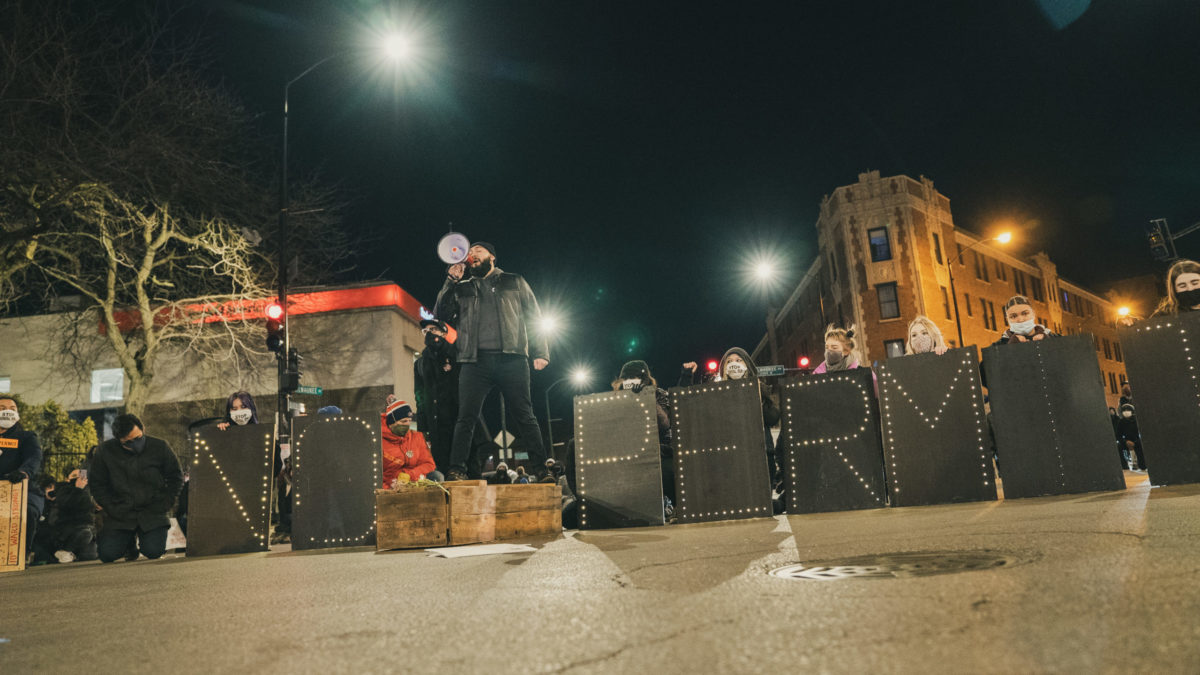Mere days after the first anniversary of a month-long hunger strike organized by community members of Chicago’s 10th Ward to protest General Iron’s relocation, the City of Chicago denied the operating permit for the scrap metal facility to operate in the area. Community organizers celebrated, but say this is not the end of their fight for environmental justice in the Southeast Side of Chicago and the city.
According to one of the first residents to join the hunger strike, Breanna Bertacchi, the Southeast Side community is still slowly coming out of the shock phase of processing their victory after a “multi-year, high-stakes battle for which the majority of the time [they] felt ignored and underrepresented.”
Oscar Sanchez, who also joined the hunger strike with Bertacchi, said, “The anticipation and lack of hope we have with those in power made me believe and made us prepare to have an action at City Hall that same Friday, but instead, our Stop General Iron Campaign celebrated.”
Had it been approved, the General Iron facility—now known as RMG/Southside Recycling—would have joined close to 250 industrial sites in the Southeast Side, bringing with it a long history of citations and complaints.
“We recognize that there are tangential battles in the city that are still needing to be addressed. MAT Asphalt in McKinley Park, among others,” Bertacchi said. “We are continuing to work with our environmental justice peers to address immediate needs. However, long-term sustained policy changes are required to shift this battle away from ongoing ‘emergencies’ that require so much labor and education on behalf of the communities impacted.”
Some of the considered policies include a clean air ordinance, beta testing electric buses, as well as land remediation and various toxin removals, in order to overturn and regulate the environmental issues the 10th Ward has faced for decades.
In 2013, Southeast Side residents reported petroleum coke, also known as “pet coke,” blowing through their neighborhood as a product of the large piles at nearby oil refineries. Reports were filed in 2015, according to the Environmental Protection Agency (EPA).
More recently, the Indiana Department of Environmental Management proposed to repair a breakwater in Hammond, Indiana, which will permanently impact four acres below the Ordinary High Water Mark of Lake Michigan, according to the proposal, potentially affecting water quality between Chicago and the Hammond-East Chicago-Whiting area. Public commentary ends April 11.
In May of last year, EPA administrator Michael Reagan sent a letter to Chicago Mayor Lori Lightfoot urging the City of Chicago to delay the permitting process of a new General Iron facility in the Southeast Side to allow for an environmental justice study to take place in order to determine the impact that the new facility would have on the health of local residents.
Later in the fall, the Chicago Department of Public Health announced that they had concluded a Health Impact Analysis (HIA) in partnership with the EPA, which conducted tests and gathered data to determine how General Iron’s operations could impact the community.
According to Chuck Stark, another early participant in the hunger strike, a cumulative impact assessment used to make the final permit decision for Southside Recycling should be completed for every single industrial permit across the city, especially in environmental justice communities: “A push to make this standard practice is one of the big things that is already happening now.”
Bertacchi, Stark and Sanchez began their hunger strike on February 4 of last year, joined by Yesenia Chavez four days later. They made the decision to drink certain liquids to mitigate the heightened effects of a hunger strike during a global pandemic.
About twelve hunger strikers continued past the two-week mark, including Bertacchi, Sanchez and Stark who lasted twenty-nine days on strike, and Chavez who lasted twenty-five, they said. However, over the course of the movement, close to a hundred people participated through one-day solidarity strikes. The movement spread throughout environmental groups in the city and gained support from across the nation.

Before the hunger strike, the coalition had been encouraged to take up space and voice their opposition against the metal scrapper as frequently as possible, with petitions, rallies, marches and protests. However, despite using all the outlets advertised by public officials as a means of being heard, they received no response from the City and had to shift to what felt “like a last resort to some extent,” Bertacchi said.
While the campaign proved to be a success in influencing the denial of the permit, the community members of the 10th ward face detrimental impacts to their relationship with Alderwoman Susan Sadowski Garza.
“Relationships with the alderwoman are very fractured,” Stark said. “She has spoken very negatively about those involved in the fight to stop the permit for Southside Recycling, and many involved in the campaign do not look to her as someone who represents their vision of the neighborhood.”
Chavez shared that Garza’s actions throughout the campaign shocked the community members of her ward, as many of them, including Chavez’ family, had personal working relationships with Garza prior to the campaign.
“To see in real time someone that you know has had conversations with my family members and has had connections with them, and has had impacts on the lives of my friends and their children… literally side with polluters that are obviously there for profit was a big reality check,” Chavez said.
Garza’s office did not respond to the Weekly’s request for comment as of press time.
Through community organizing and public actions, “Organizers are starting to finally have an actual ‘seat at the table,’ so to speak,” Stark said. “The City is the governing body that is supposed to represent residents and look out for their health and well-being, so environmental justice organizers are helping the City follow through with those responsibilities.”
Despite their fragile relationship with the alderwoman, the goal moving forward is for environmental justice organizers to shift to a position of working with the City, instead of against it, in order to represent their community and create their vision of the Southeast Side neighborhood, he said.
The City’s initiative to release the Climate Action Plan to begin addressing some of the community’s environmental concerns shows promise. The Climate Action Plan invited residents to share their environmental and climate concerns, which were used to shape the content of the plan. The priorities include, but are not limited to, better air quality and reduced pollution, better access to affordable and reliable renewable energy, and the closure of fossil fuel power plants.
The Biden Administration and the EPA announced a $1 billion investment to the Great Lakes Restoration Initiative, in order to “make significant progress in the clean-up and restoration of the Great Lakes’ most environmentally degraded sites, securing clean water and a better environment for millions of Americans in the Great Lakes region.” The majority of the investment will be used to clean up and restore severely degraded sites, such as the Calumet River, an area of concern since 1987.
Community members like Sanchez, “know there’s more to be done, but we demonstrated what the power of the people can do,” and are inspired to know “the Southeast Side gets to breathe.”
Mckenzie Richmond is a current Northwestern Medill graduate student specializing in social justice and sports media and has journalism experience as a reporter and photographer. This is her first piece for the Weekly.

